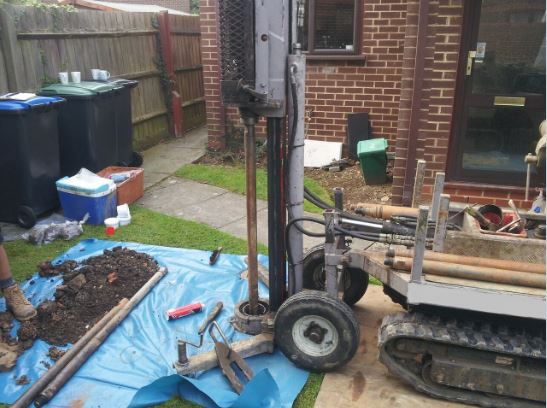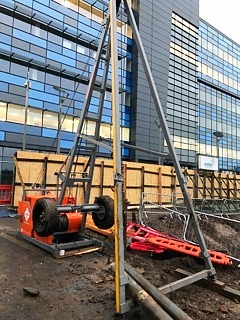phase - 2
Ground Investigation Report (GI)
Phase 1 Land Contamination Desk Study Assessments comprise the collation of desk based data together with information gained from a site walkover survey. This provides an initial overview of the nature and extent of Geo-technical or contamination hazards that may exist on a property.
The desk study typically includes a review of historical maps and aerial photographs, consideration of the geological and hydro-geological setting of the site from published sources, contact with regulatory authorities and retrieval of information from database resources.
These are critical in revealing potential ground hazards such as potentially contaminating land uses (current and historic), pollution incidents, mining hazards, naturally occurring radon gas, etc.
They also help to understand the wider environmental setting of the site so that potential receptors to land contamination, such as groundwater and surface water resources, can be identified. The Desk Study provides information on the potential liabilities a site poses, from a qualitative viewpoint.
We work Nationwide and maintain a competitive service.
The range of investigation techniques that JOMAS offer include:
Inspection pits – Shallow hand dug holes to inspect near surface soils or existing foundations.
Mechanically excavated trial pits – for deeper trial holes.
Window/windowless sampling – Narrow diameter boreholes that can be undertaken in confined spaces, and used to drill shallow boreholes.
Cable percussive boreholes – The drilling method for deep boreholes in soils and soft rocks.
Rotary core boreholes – Method for drilling in hard rock.
Dynamic probing – A method of measuring the penetration resistance of the soil.
California Bearing Ratio (CBR) testing – An in-situ test undertaken to assist in the design of road construction.
Laboratory analysis – Chemical and geotechnical testing of samples.
Groundwater monitoring – Measuring water levels and retrieving samples for laboratory testing.
Gas monitoring – Portable analyser is used to measure ground gases such as methane, carbon dioxide and oxygen.
Soakage tests – A soil permeability test used to provide infiltration parameters for the design of soakaways for surface water disposal. This can be undertaken as a rising/falling head test in a borehole, or in accordance with BRE 365 in Trial Pits.
The ground investigation and laboratory analysis is followed by generic quantitative risk assessments (GQRA) and/or detailed quantitative risk assessments (DQRA), for soil quality appraisal.
The groundwater impact assessment is undertaken in accordance with the EA Hydrogeological Risk Assessment for Land Contamination.
Data from the intrusive investigation enables the conceptual model developed in Phase 1 to be updated. Potential pollutant linkages are identified, and the need for further works (if any), highlighted.



